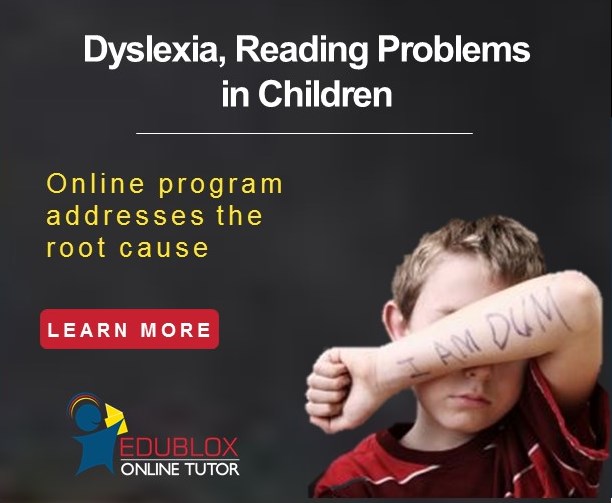 In the last 25 years, volumes have been written about the correlation between phonological processing deficits (and especially a phonemic awareness deficit) and reading difficulties like dyslexia.
In the last 25 years, volumes have been written about the correlation between phonological processing deficits (and especially a phonemic awareness deficit) and reading difficulties like dyslexia.
In the scientific community, many has reached consensus that most reading and spelling disabilities originate with a specific impairment of language processing, not with general visual-perceptual deficits, inability to construct meaning from context, or other more general problems with attention or memory.1
What is phonological awareness?
Phonological awareness refers to an individual’s awareness of the phonological structure, or sound structure, of language. It is a listening skill that includes the ability to distinguish units of speech, such as rhymes, syllables in words, and individual phonemes in syllables.
Phonological awareness is often confused with phonics, but it is different. Phonics requires students to know and match letters or letter patterns with sounds, learn the rules of spelling, and use this information to decode (read) and encode (write) words. Phonological awareness relates only to speech sounds, not to alphabet letters or sound-spellings, so it is not necessary for students to have alphabet knowledge in order to develop a basic phonological awareness of language.
Examples of phonological awareness tasks include:
• Recognizing when words rhyme (e.g., “Do ‘cat’ and ‘shoe’ rhyme?”) and coming up with a word that rhymes (e.g., “What rhymes with ‘key’?”)
• Segmentation of words in sentences (e.g., “Clap for each word you hear in the sentence ‘The dog is furry.’”)
• Blending syllables (e.g., “I am going to say parts of a word. Tell me what the word is. ‘Pan-da.’”)
• Segmentation of syllables (e.g., “Clap for each syllable you hear in the word ‘refrigerator.’”)
• Deletion of syllables (e.g., “Say the word ‘strawberry.’ Now say it without saying ‘straw.’”)
• Identifying sounds in words (e.g., “What sound do you hear at the end of ‘tulip’?”)
• Blending sounds (e.g., “Put these sounds together to make a word. ‘D-oo-r.’”)
• Segmentation of sounds (e.g., “Tell me each sound you hear in the word ‘cat’?”)
• Deletion of sounds (e.g., “Say ‘chair.’ Now say it without the ‘ch.’”)
• Addition of sounds (e.g., “Say ‘cook.’ Now say it with an ‘e’ at the end.”)
• Manipulation of sounds (e.g., “Change the ‘s’ in ‘sad’ to a ‘d’ and say the new word.”)2
 What is phonemic awareness?
What is phonemic awareness?
Phonemic awareness is a subset of phonological awareness that focuses on recognizing and manipulating phonemes, the smallest units of sound. The two most important phonemic awareness skills are segmenting and blending. Segmenting is breaking a word apart into its individual sounds. Blending is saying a word after each of its sounds are heard. If a child can segment, he is able to say f–i–sh after hearing the word fish. If he can blend, he’s able to say the word fish after hearing the individual sounds f–i–sh.
The ability to segment and blend phonemes is said to be critical for the development of reading skills, including decoding and fluency, and even that it predicts reading ability. Adams concluded that phonemic awareness is the “most important core and causal factor separating normal and disabled readers.”3 It is also said that phonemic awareness training will overcome dyslexia.
Correlation does not mean causation
Margaret Moustafa at the California State University in Los Angeles, however, points out that correlation does not establish causation. “There is a strong correlation between, for example, being in a hospital bed and being sick, but being in a hospital bed doesn’t cause sickness, at least not the sickness that brought about the initial hospitalization. The word predicts is a statistical term which means there is a very strong correlation between two phenomena. Prediction does not mean causation.
“Research does not support phonemic awareness training,” says Moustafa. “Bus & van Ijzendoorn (1999) found that phonemic awareness in kindergarten accounts for 0.6 % of the total variance in reading achievement in the later primary years. Troia (1999) reviewed 39 phonemic awareness training studies and found no evidence to support phonemic awareness training in classroom instruction. Krashen (1990a, 1999b) conducted similar reviews and had similar findings. Taylor (1998) points out that phonemic awareness research is based on the false assumption that children’s early cognitive functions work from abstract exercises to meaningful activity, rather than vice-versa, as in other learning.
“In fact, rather than phonemic awareness being a pre-requisite to literacy, literacy contributes to phonemic awareness (Scholes, 1998; Treiman, 1983, 1985). We use our knowledge of how words are spelled to figure out how many phonemes are in a word. We are less competent in analyzing spoken words into phonemes when individual phonemes do not have a one-to-one correspondence with letters. For example, most literate adults do not realize that there are four phonemes — not three — in the word box. Phonemic awareness training is a cart-before-the-horse approach to teaching reading.”4
.
© Edublox
Edublox Online Tutor offers multisensory cognitive training that enables learners to overcome reading problems and learning challenges and reach their full potential. Over the last 30+ years, the company behind the Online Tutor e-learning platform, Edublox, has helped thousands of children to read, learn and achieve through home kits and learning clinics internationally. Our programs are founded on pedagogical research and more than three decades of experience demonstrating that weak underlying cognitive skills account for the majority of learning difficulties. Specific cognitive exercises can strengthen these weaknesses leading to increased performance in reading, spelling, writing, math and learning.
.
References:
1.) Moats, L. C., “The missing foundation in teacher education,” American Educator, 1995.
2.) Knobelauch, L., “What is phonological awareness?” Handy Handouts,
http://www.handyhandouts.com/viewHandout.aspx?hh_number=172
3.) Adams, M. (1990). Beginning to read: Thinking and learning about print. Cambridge, MA: MIT Press.
4.) Moustafa, M., “Research on phonemic awareness training” (summary), California State University, Los Angeles.
